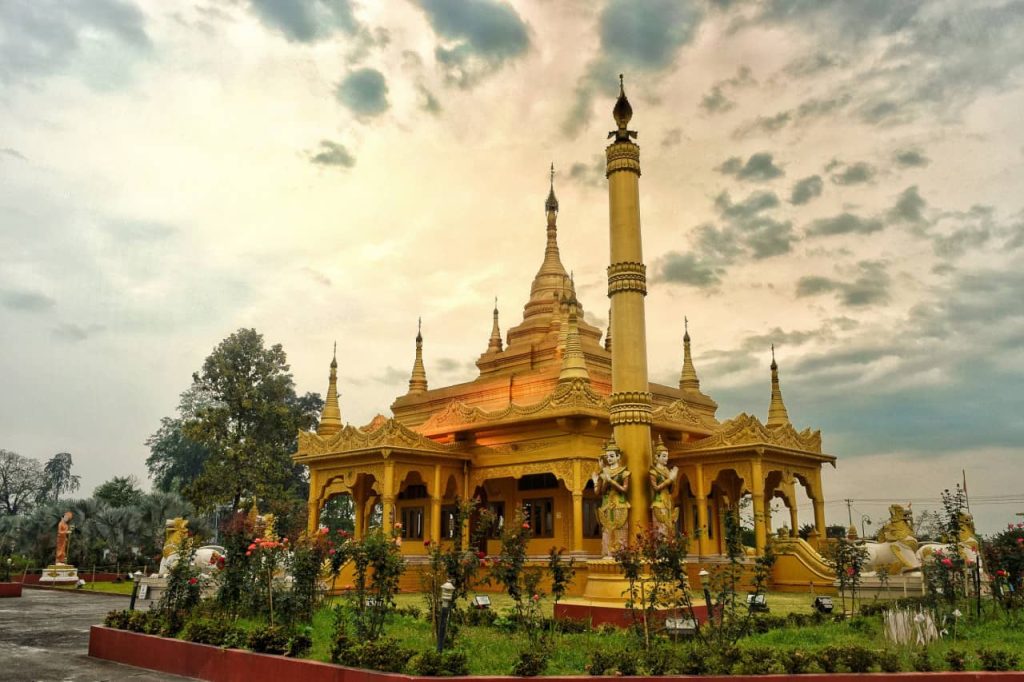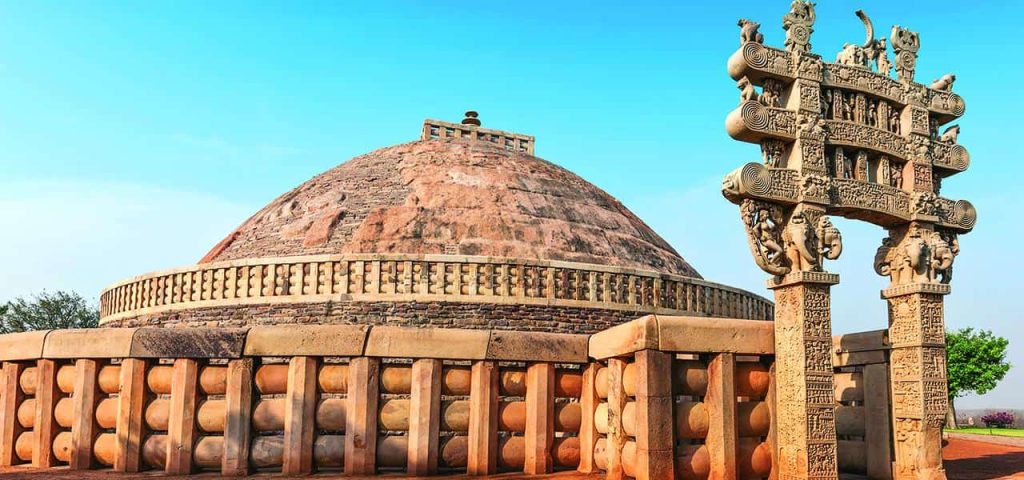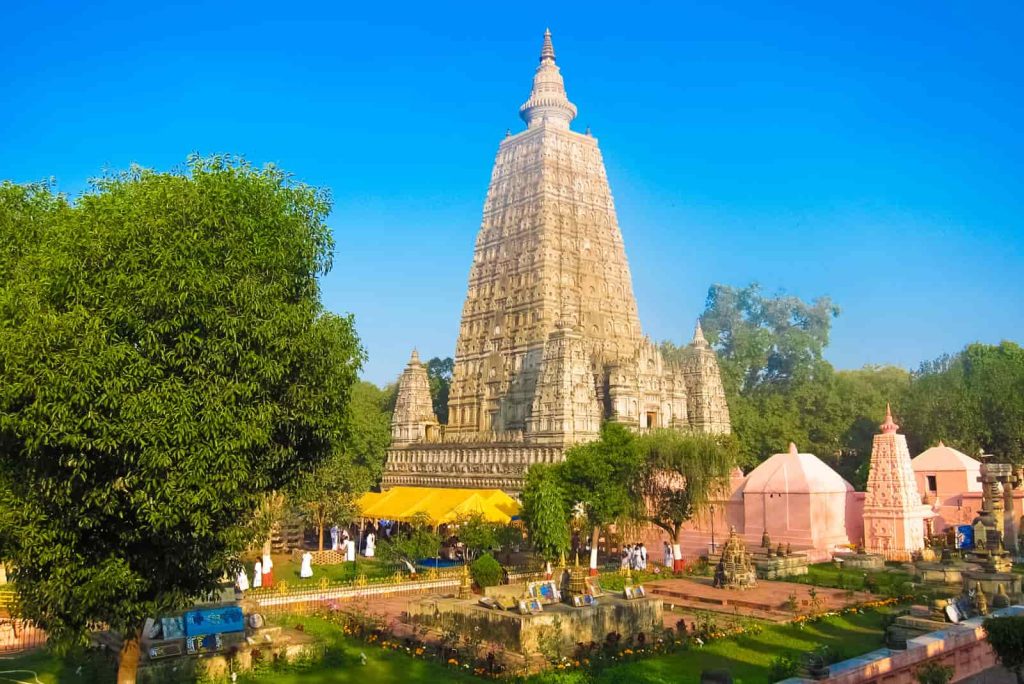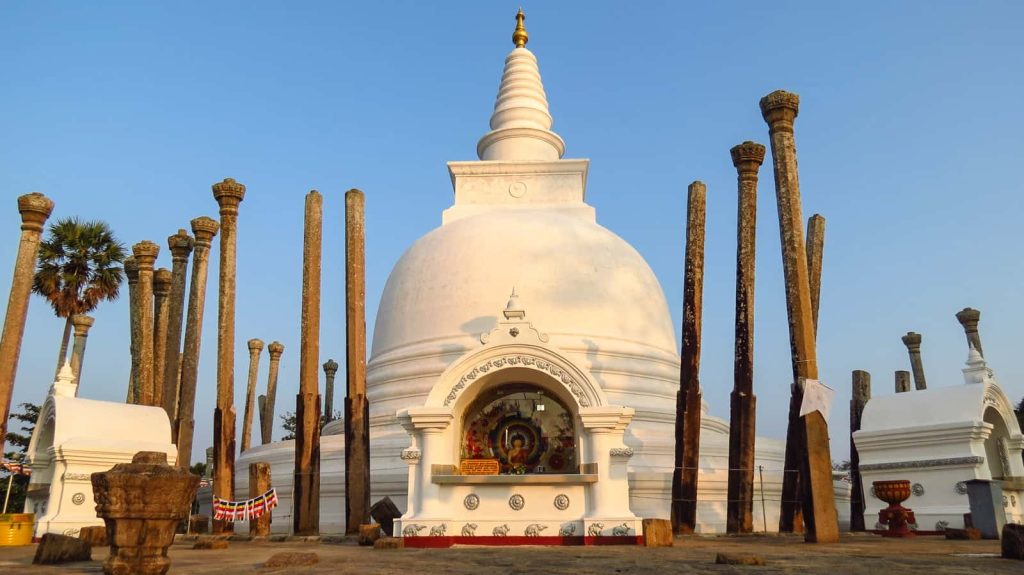The constructions and architectural motifs connected to Buddhism are called Buddhist architecture. It has changed and is unique to the places and societies where Buddhism has been practised. Because Buddhist traditions are so numerous, there is no “Buddhist architecture,” yet specific components and traits are frequently seen in Buddhist religious buildings.
Buddhist architecture is a living example of the precepts and teachings of the Buddha. It is a monument to millions of people’s tremendous spiritual journey worldwide. Buddhist architecture, which spans nations, continents, and millennia, illustrates the diversity of a rich and old heritage. Examples of this diversity include the majesty of towering stupas and the simplicity of lonely meditation rooms.
The architecture of the Buddhist tradition, which has its roots in the teachings of Siddhartha Gautama, is more than just a collection of buildings; it is a picture of enlightenment, compassion, and the way to Nirvana. Every area, from the vast plains of Southeast Asia to the misty heights of the Himalayas and the calm landscapes of Japan, has produced its unique manifestation of Buddhist architecture.
The primary features of Buddhist architectural forms include the well-known sky-reaching stupas, the serene monasteries that shelter monks seeking enlightenment, and the contemplative Zen gardens that promote meditation. The origins of Buddhist architecture can be found in India, where the Buddha’s teachings were first transmitted; it all started with creating symbols representing various facets of the Buddha’s life (563 BCE – 483 BCE). The great Indian emperor Ashoka made Buddhism the official religion of his expansive Magadh empire and used architectural monuments to disseminate Buddhism.
Element of Buddhist Architecture

One of the most recognisable and common types of Buddhist architecture is stupas. These dome-shaped buildings frequently house relics or holy items connected to the Buddha or influential Buddhist personalities. Although the stupas’ dimensions and designs might vary, they usually include a spire and a square or circular base. Monks reside and study in Buddhist monastic complexes called viharas. These buildings often house monks’ housing quarters, meditation halls, and gathering places for the community. Viharas can be anything from modest homes to intricate complexes, depending on the historical setting and the Buddhist tradition.
In Buddhist architecture, prayer halls or worship areas are called chaityas. Typically, they have a central nave, rows of columns, and a stupa or other holy object at one end. For religious ceremonies and rituals, worshippers congregate in chaityas. Gardens are essential for generating calm and peaceful spaces in Japanese Zen Buddhism. Zen gardens frequently have thoughtfully placed plants, gravel, and pebbles to encourage introspection and mindfulness.
A key component of its architectural manifestation is Buddhist art; scenes from the life of the Buddha, Buddhist cosmology, and other sacred subjects are frequently shown in thangkas, traditional Tibetan Buddhist paintings on fabric, and murals within temples. Buddhist temples can be found all over the world in a variety of architectural styles. They frequently have unique architectural features like Buddha sculptures, elaborate carvings, and holy pictures.

Buddhist architecture is replete with Buddha sculptures. These statues are seen in temples, stupas, and other places of worship. Buddha sculptures come in various poses and iconographies that reflect multiple facets of his life and teachings. Several Buddhist lineages use wooden architecture, especially in East Asia. Customary wooden constructions, like Chinese pagodas and Japanese Zen temples, highlight fine carpentry and balance with the environment.
Structure Of Stupas
Buddhist architecture is characterised by its iconic stupas, which serve as religious monuments and usually contain sacred relics or commemorate essential moments in the Buddha’s life. While regional variances may exist, stupa structures are similar in many Buddhist schools. The Adhishtana base, which serves as the stupa’s structural anchor, is square or round and represents the earth element and the solidity of Buddhist teachings. It can be embellished with reliefs, carvings, or symbolic representations. The harp is a square fence or railing positioned atop the foundation. It symbolises the teachings of the Buddha and the passage from the material world to the spiritual world. The harmonica has apertures or gateways on either side that permit spiritual energy to flow freely.
Japanese Buddhist Temple
Japanese Buddhist temples combine exquisite architecture with profound spiritual importance, essential to Japan’s religious and cultural landscape. Japanese temples, rooted in several Buddhist traditions like Zen and Shingon, are characterised by unique features and forms that illustrate the exceptional fusion of local Shinto beliefs with Buddhist precepts. The Hondo is the temple’s main hall, where the primary object of worship—typically a statue or picture of the Buddha—is kept. It is the focal point for religious rites, ceremonies, and meditation. The Hondo’s architecture varies; some temples have grand, ornate structures, while others are simple, minimalist buildings.
Japanese pagodas are multi-tiered towers that hold holy relics or religious writings. They are modelled after traditional Indian stupas. They are usually built using frameworks made of stone or wood and have an odd number of stages. Not all temples have pagodas, and their styles might differ according to local and historical influences.
Chaitya Architecture
Chaitya architecture is related to Buddhist prayer halls or temples carved out of rock, mainly in India. A Buddhist shrine or prayer hall is called a “chaitya,” its architecture is distinguished from other Buddhist building types by a few key elements. Chaityas are rock-cut buildings that Buddhist monks and followers use as prayer halls or worship areas; they have a central nave, a back stupa or shrine that resembles an apse, and a processional route surrounding the stupa.
Korean Buddhist Temple

Korean temple architecture has developed throughout its more than a thousand-year history, absorbing elements from different Buddhist schools and adjusting to the particularities of the Korean environment. A Korean Buddhist temple’s main hall, Daeungjeon, is devoted to the temple’s principal Buddha or bodhisattva. A two-tiered roof and a unique square floor plan are standard architectural features that give the building a harmonious and well-balanced appearance. The famous Buddha statue is on a central altar inside the Daeungjeon, where devotees congregate for rituals and meditation.
Laos Buddha Temple
Laos, a country primarily Buddhist, is home to many Buddhist temples, known locally as “Wat,” which are significant centres of worship and culture. Theravada Buddhism affected Lao temple architecture, characterised by elaborate patterns, vivid colours, and spiritual meaning. In Laos, stupas, or “that,” are dome-shaped buildings that frequently house sacred scriptures or relics. The ho is a little structure that houses manuscripts, holy books, and other significant Buddhist writings. Often found adorning staircases and entrances are ornate naga (serpent) fences for fertility and protection.
Chinese Buddhist Temple
Chinese Buddhist temples, referred to as “si”, are rich in historical and cultural significance. Chinese Buddhism has been around for more than two millennia, and as such, it has affected temple construction, resulting in a distinctive fusion of traditional Chinese design with Buddhist symbolism. The Four Heavenly Kings, Buddhist protectors, are honoured at the Hall of Heavenly Kings (Tianwangdian), frequently seen near the entryway. Statues and paintings of the Four Heavenly Kings are used to symbolise them. The primary Buddha or Bodhisattva images are kept in the Main Hall (also known as Mahavira Hall or Daxiongbaodian), which serves as the focal point for worship and festivities. Its enormous roof, wooden pillars, and elaborate carvings are reminiscent of ancient Chinese architecture.
Buddhist architecture is a visible manifestation of the Buddha’s profound teachings; from the majestic stupas that pierce the sky to the calm, simple meditation halls, it offers an opulent trip through time, culture, and spirituality. Spaces that connect with architectural splendour and spiritual significance are created through elaborate designs woven together by shared strands of symbolism, mindfulness, and enlightenment across many cultures and countries.
The stupas, symbolising the pursuit of wisdom and inner calm, are monuments to the Buddha’s enlightenment with their lofty spires and round or square bases. Whether in viharas or Zen temples, the monastic buildings offer sanctuaries where monks and practitioners can meditate and delve into the teachings.
Every component, from the wooden temples of East Asia to the chaityas of ancient India, represents the subtle cultural expressions and creative sensibilities of the communities that accepted Buddhism.





